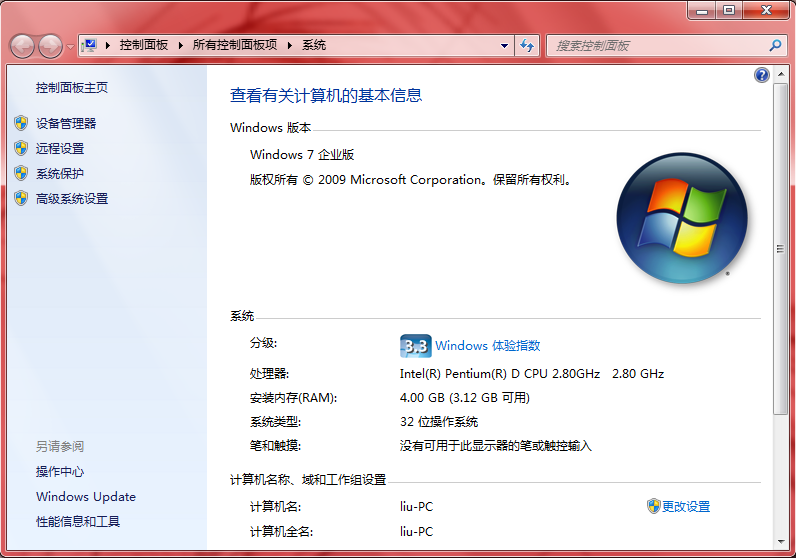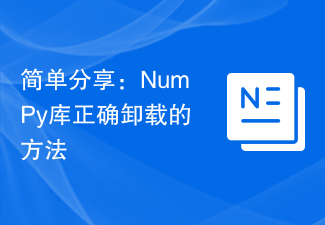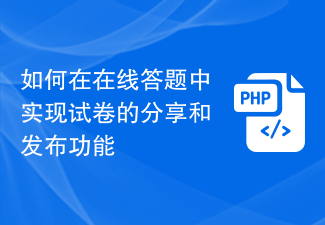 Backend Development
Backend Development PHP Tutorial
PHP Tutorial Experience Sharing: PHP Array Loop Data Fetching Techniques_PHP Tutorial
Experience Sharing: PHP Array Loop Data Fetching Techniques_PHP Tutorial
If we want to get a lot of data, you have to loop through the array. Let’s take a look at PHPlooping through the array to get the data. Since you're responsible for placing the data inside the array, now, how do you get it out? Retrieving data from an array is very simple: all you need to do is use the index number to access the appropriate element of the array. To read the contents of the entire array, you simply loop over it using the loop construct you learned in Chapter 3 of this tutorial.
How about a quick example?
<ol class="dp-c">
<li class="alt"><span><span> My favourite bands are: <ul> <?php </span>
</ul></span></span></li>
<li>
<span class="comment">// define array $artists = array('Metallica', 'Evanescence', 'Linkin Park', 'Guns n Roses'); </span><span> </span>
</li>
<li class="alt"><span class="comment">// loop over it and print array elements for ($x = 0; $x <span> </span></span></li>
</ol>
When you run the script, you will see the following results:
<ol class="dp-xml"><li class="alt"><span><span>My favourite bands are: Metallica Evanescence Linkin Park Guns n Roses </span></span></li></ol>
In this example, I first defined an array, and then used a for() loop to do the following: traverse the array, use index notation to get the elements, and then display them one by one. Here, I will draw your attention to the sizeof() function. This function is one of the most important and commonly used array functions. It returns the size of the array (read: the number of elements in the array). It is mostly used in loop counters to ensure that the number of loops is consistent with the number of all elements in the array. If you are using associative arrays, the array_keys() and array_values() functions are readily available to get a list of all the keys and corresponding values in the array.
<ol class="dp-c">
<li class="alt"><span><span class="string">'bacon and eggs'</span><span>, </span><span class="string">'lunch'</span><span> => </span><span class="string">'roast beef'</span><span>, </span><span class="string">'dinner'</span><span> => </span><span class="string">'lasagna'</span><span>);</span></span></li>
<li class="alt"><span><span> </span><span class="comment">/* returns the array ('breakfast', 'lunch', 'dinner') with numeric indices */</span><span> </span></span></li>
<li class="alt"><span><span class="vars">$result</span><span> = </span><span class="func">array_keys</span><span>(</span><span class="vars">$menu</span><span>); print_r(</span><span class="vars">$result</span><span>); print " </span></span></li>
<li>
<span>"; </span><span class="comment">/* returns the array ('bacon and eggs', 'roast beef', 'lasagna') with numeric indices */</span><span> </span>
</li>
<li>
<span class="vars">$result</span><span> = </span><span class="func">array_values</span><span>(</span><span class="vars">$menu</span><span>); print_r(</span><span class="vars">$result</span><span>); ?> </span>
</li>
</ol>
However, there is an easier way to extract all elements in an array. PHP 4.0 introduces a very new type of loop designed specifically for the purpose of repeatedly enumerating arrays: the foreach() loop (its syntactic structure is similar to the Perl structure of the same name).
The following is its syntax format:
<ol class="dp-c"><li class="alt"><span><span class="keyword">foreach</span><span> (</span><span class="vars">$array</span><span> </span><span class="keyword">as</span><span> </span><span class="vars">$temp</span><span>) { </span><span class="keyword">do</span><span> this! } </span></span></li></ol>
The foreach() loop runs once for each element of the array passed to it as a parameter, repeating each time while traversing the array forward. Unlike the for() loop, it does not require a counter or calling the function sizeof() because it automatically keeps track of its position in the array. On each run, the statements within the curly braces are executed, and the currently selected array element is accessed through a temporary PHP array loop variable. To better understand how this works, consider a rewrite of the previous example using a foreach() loop:
<ol class="dp-xml">
<li class="alt"><span><span class="tag"><span class="tag-name">html</span><span class="tag">></span><span> </span><span class="tag"><span class="tag-name">head</span><span class="tag">></span><span class="tag"></span><span class="tag-name">head</span><span class="tag">></span><span> </span><span class="tag"><span class="tag-name">body</span><span class="tag">></span><span> My favourite bands are: </span><span class="tag"><span class="tag-name">ul</span><span class="tag">></span><span> </span><span class="tag"></span><span class="tag-name">php</span><span> </span></span></span></span></span></span></li>
<li class="alt"><span><span>// define array $</span><span class="attribute">artists</span><span> = </span><span class="attribute-value">array</span><span> </span></span></li>
<li><span>('Metallica', 'Evanescence', 'Linkin Park', 'Guns n Roses'); </span></li>
<li><span>// loop over it // print array elements foreach ($artists as $a) </span></li>
<li class="alt">
<span>{ echo '</span><span class="tag"><span class="tag-name">li</span><span class="tag">></span><span>'.$a; } </span><span class="tag">?></span><span> </span><span class="tag"></span><span class="tag-name">ul</span><span class="tag">></span><span> </span><span class="tag"></span><span class="tag-name">body</span><span class="tag">></span><span> </span><span class="tag"></span><span class="tag-name">html</span><span class="tag">></span><span> </span></span>
</li>
</ol>
Each time the loop is executed, it will select The value of the array element is placed in the temporary variable $a. This variable can then be used by statements within the PHP array loop block. Because the foreach() loop does not require a counter to keep track of its position in the array, it requires less maintenance and is more readable than a standard for() loop. Oh, yes... it also works with associative arrays, with no additional programming required.
 芒果tv会员账号分享2023Feb 07, 2024 pm 02:27 PM
芒果tv会员账号分享2023Feb 07, 2024 pm 02:27 PM芒果TV拥有各种类型的电影、电视剧、综艺等资源,用户可以在其中自由的选择进行观看。芒果tv会员不仅能够看到全部的VIP剧而且还能够设置最高清的画质,帮助用户爽快看剧,下面小编就给大家带来一些芒果tv免费的会员账号供用户们使用,赶紧来看一看吧。芒果tv最新会员账号免费分享2023:注意:都是收集的最新会员账号,可以直接登录使用,不要随意的修改密码。账号:13842025699密码:qds373账号:15804882888密码:evr6982账号:13330925667密码:jgqae账号:1703
 win7企业版激活密钥有哪些的分享Jul 09, 2023 pm 03:01 PM
win7企业版激活密钥有哪些的分享Jul 09, 2023 pm 03:01 PMwin7企业版激活密钥有没有最新的?如果你安装的是官方win7企业版,会提示用windows7企业版产品密钥来激活,否则不能正常使用。所以小编接下来跟大家分享一些win7企业版激活密码,大家一起来看看吧。Q3VMJ-TMJ3M-99RF9-CVPJ3-Q7VF3KGMPT-GQ6XF-DM3VM-HW6PR-DX9G8MT39G-9HYXX-J3V3Q-RPXJB-RQ6D79JBBV-7Q7P7-CTDB7-KYBKG-X8HHCP72QK-2Y3B8-YDHDV-29DQB-QKWWM6JQ
 win7系统如何分享wifi热点Jul 01, 2023 pm 01:53 PM
win7系统如何分享wifi热点Jul 01, 2023 pm 01:53 PMwin7系统如何分享wifi热点?我们电脑在连接了网络之后,也是可以进行无线网络的分享的。很多用户想要将自己电脑的网络分享到手机上来使用。很多小伙伴不知道怎么详细操作,小编下面整理了win7系统如何分享wifi热点的操作方法步骤,如果你感兴趣的话,跟着小编一起往下看看吧! win7系统如何分享wifi热点的操作方法步骤 1、要想开启wifi热点,首先得要有无线网卡,笔记本是有自带的,pc的话可以购买一个随身wifi来分享wifi,这里就不叙述了。首先按下键盘上的windows键打开开始菜
 PHP开发心得分享:掌握各种功能实现的经验与建议Nov 22, 2023 pm 12:02 PM
PHP开发心得分享:掌握各种功能实现的经验与建议Nov 22, 2023 pm 12:02 PM在当前互联网高速发展的时代,PHP作为一种服务器端脚本语言,被越来越多的开发者所采用。PHP具有简单易学、灵活、开源免费等优势,可以快速开发各种网站和Web应用。然而,作为一名PHP开发者,要想在激烈的竞争中脱颖而出并写出高效稳定的代码,还需要掌握各种功能的实现技巧和经验。首先,合理规划项目架构是开发PHP应用的关键。一个良好的项目架构可以提供更好的代码可维
 windows7旗舰版激活码分享Jul 15, 2023 am 11:25 AM
windows7旗舰版激活码分享Jul 15, 2023 am 11:25 AM我们都知道windows7系统需要用激活系统之后才能正常使用windows7的各项功能,激活系统我们一般有两种方法一种是使用官方发布的激活码激活,一种是使用网上的激活工具来激活,很多小伙伴都不知道windows7旗舰版激活码使用方法。下面跟小编一起来看看吧。 windows7旗舰版激活码 神key KH2J9-PC326-T44D4-39H6V-TVPBY TFP9Y-VCY3P-VVH3T-8XXCC-MF4YK 236TW-X778T-8MV9F-937GT-QVKBB 87
 简单分享:NumPy库正确卸载的方法Jan 26, 2024 am 08:42 AM
简单分享:NumPy库正确卸载的方法Jan 26, 2024 am 08:42 AM如何正确卸载NumPy库:简单教程分享引言:NumPy是Python中一个常用的数值计算库,它提供了大量的数学函数和数组操作工具,被广泛应用于科学计算、数据分析和机器学习等领域。然而,在某些情况下,我们可能需要卸载NumPy库并重新安装或更新它。本文将为大家介绍如何正确卸载NumPy库,并提供具体的代码示例,帮助读者轻松完成此任务。步骤一:确认NumPy库是
 如何在在线答题中实现试卷的分享和发布功能Sep 25, 2023 am 08:37 AM
如何在在线答题中实现试卷的分享和发布功能Sep 25, 2023 am 08:37 AM如何在在线答题中实现试卷的分享和发布功能随着互联网的发展,越来越多的教育机构和个人开始在线教育,其中在线答题作为一项重要的教学工具被广泛使用。在这种情况下,试卷的分享和发布功能成为在线答题平台的关键特性之一。本文将介绍如何实现试卷的分享和发布功能,并给出具体的代码示例。一、设计及实现思路试卷分享和发布功能的设计和实现需要考虑以下几个方面:用户端功能:用户可以
 踩过的坑:Go语言项目开发经验与教训Nov 03, 2023 am 08:14 AM
踩过的坑:Go语言项目开发经验与教训Nov 03, 2023 am 08:14 AM踩过的坑:Go语言项目开发经验与教训在软件开发的道路上,每个开发者都会不可避免地踩过一些坑。当然,对于Go语言的开发者来说也不例外。本文将分享我在使用Go语言进行项目开发过程中所踩过的坑,希望能给其他开发者带来一些经验和教训。不同版本的Go语言在使用Go语言进行项目开发时,我们必须关注Go语言的版本。不同版本之间可能存在一些语言上的差异或者API的变动,这些


Hot AI Tools

Undresser.AI Undress
AI-powered app for creating realistic nude photos

AI Clothes Remover
Online AI tool for removing clothes from photos.

Undress AI Tool
Undress images for free

Clothoff.io
AI clothes remover

AI Hentai Generator
Generate AI Hentai for free.

Hot Article

Hot Tools

MinGW - Minimalist GNU for Windows
This project is in the process of being migrated to osdn.net/projects/mingw, you can continue to follow us there. MinGW: A native Windows port of the GNU Compiler Collection (GCC), freely distributable import libraries and header files for building native Windows applications; includes extensions to the MSVC runtime to support C99 functionality. All MinGW software can run on 64-bit Windows platforms.

Safe Exam Browser
Safe Exam Browser is a secure browser environment for taking online exams securely. This software turns any computer into a secure workstation. It controls access to any utility and prevents students from using unauthorized resources.

SAP NetWeaver Server Adapter for Eclipse
Integrate Eclipse with SAP NetWeaver application server.

SublimeText3 English version
Recommended: Win version, supports code prompts!

mPDF
mPDF is a PHP library that can generate PDF files from UTF-8 encoded HTML. The original author, Ian Back, wrote mPDF to output PDF files "on the fly" from his website and handle different languages. It is slower than original scripts like HTML2FPDF and produces larger files when using Unicode fonts, but supports CSS styles etc. and has a lot of enhancements. Supports almost all languages, including RTL (Arabic and Hebrew) and CJK (Chinese, Japanese and Korean). Supports nested block-level elements (such as P, DIV),




